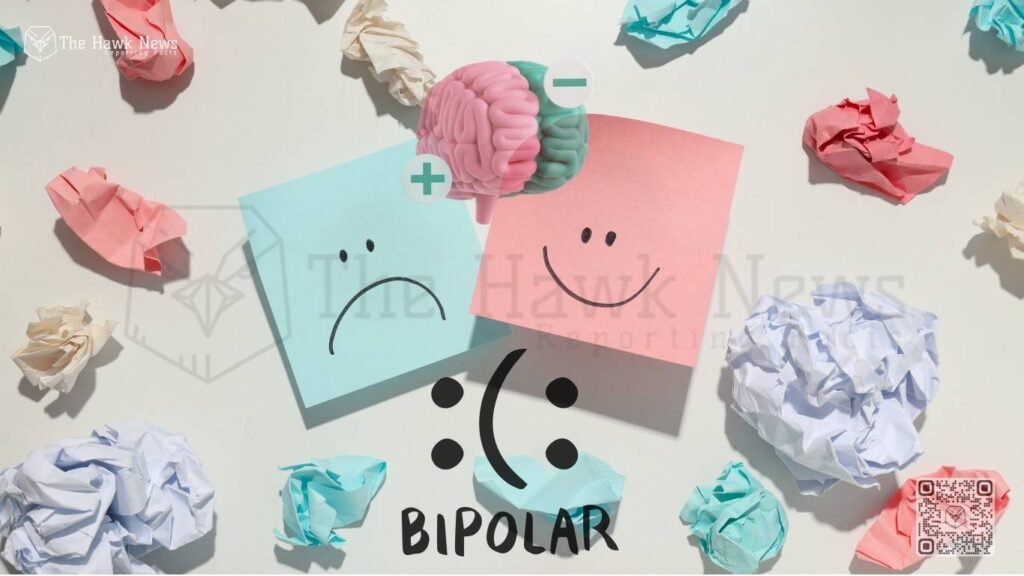
Introduction: The Rise of Real Talk
Mental health isn’t a taboo anymore—it’s a trending topic. In a world ruled by TikTok therapy snippets and Instagram carousels explaining emotional dysregulation, bipolar disorder has finally found its voice in the noise.
Once misunderstood and stigmatized, this condition is now entering the mainstream—because Gen Z and Gen Alpha are demanding real conversations, not whispered diagnoses.
From celebrities sharing their struggles to everyday creators opening up about living with mood swings and manic highs, the digital age is tearing down walls. Bipolar disorder is no longer hidden—it’s being heard.
What is Bipolar Disorder, Really?
Let’s break it down—no medical jargon overload.
Bipolar disorder is a mental health condition marked by extreme mood shifts, including emotional highs (mania or hypomania) and lows (depression). It’s not just “moodiness” or “being dramatic,” as stereotypes suggest.
There are different types:
- Bipolar I: Severe manic episodes, often with depressive crashes.
- Bipolar II: Hypomania (less extreme than mania) with major depressive episodes.
- Cyclothymia: Shorter periods of highs and lows, less intense but chronic.
The Misunderstood Generation—And Why That’s Changing
For decades, bipolar disorder was treated like a mysterious illness, often misdiagnosed or mislabeled as depression or borderline personality disorder. Why? Because people—especially young people—weren’t taught the language of mental health.
But here’s what’s changing now:
- Social media is amplifying lived experiences.
Whether it’s a TikTok creator explaining the feeling of a manic high or a YouTube vlog documenting life with bipolar II, these platforms humanize the disorder in relatable ways. - Gen Z is pushing for transparency.
This generation isn’t afraid to call out mental health misinformation or ask for accommodations. They’re rewriting the script and demanding better systems of care. - Celebrities are leading by example.
Stars like Demi Lovato, Kanye West, and Maria Bamford have opened up about their bipolar diagnoses. Their visibility brings credibility and encourages others to speak up.
Diagnosing Bipolar Today: It’s Complicated
Even with more awareness, diagnosing bipolar disorder remains tricky. Symptoms often overlap with depression, ADHD, and anxiety—especially in teens and young adults.
Signs to look for (especially in Gen Z/Alpha):
- Unusually energetic or impulsive behavior, followed by periods of extreme fatigue or sadness.
- Reckless decision-making during high-energy phases.
- Trouble sleeping—either sleeping too much or barely at all.
- Rapid speech or racing thoughts.
- Feeling like you’re on top of the world, then crashing for days.
If this sounds familiar, it’s important to seek professional help—not self-diagnose from a meme.
Why Society Is Finally Listening
The conversation around bipolar disorder is getting louder—and more compassionate. Here’s why:
1. Mental Health Is Trendy—In a Good Way
From guided journaling apps to emotional check-in posts, self-care is cool now. Mental health awareness is no longer reserved for awareness months—it’s part of daily life.
2. Workplaces Are Evolving
Employers are slowly learning that mental health accommodations aren’t “nice-to-haves”—they’re essential. Many offer flexible schedules, mental health days, and access to therapy.
3. The Language of Emotion is Expanding
Gen Z is emotionally literate. Terms like “emotional burnout,” “trauma responses,” and “neurodivergence” are part of everyday vocabulary. With the right words, people are finally able to ask for help.
Digital Advocacy: The Bipolar Community Online
On platforms like Reddit, Instagram, and TikTok, digital support networks thrive. Accounts like @bipolarbarbie and @bipolar_unfiltered offer honest, raw, and relatable content. These creators show the nuance—it’s not all sadness or chaos; sometimes it’s productivity, humor, even joy.
Online support groups have also emerged, offering safe spaces for:
- Medication discussions
- Daily challenges
- Shared stories and tips
- Encouragement during crashes
And the best part? People don’t feel alone anymore.
Treatment Today: Beyond the Pills
Yes, medication (like mood stabilizers or antipsychotics) plays a key role, but Gen Z is also exploring holistic mental health. A typical treatment toolkit might now include:
- Therapy (especially CBT and DBT)
- Daily routines to manage energy levels
- Digital tools: mood-tracking apps like Moodpath or Bearable
- Lifestyle changes: sleep hygiene, limiting caffeine, journaling
- Peer support: group therapy or online forums
It’s a full-spectrum approach—and it works better than the outdated “meds or nothing” mindset.
How You Can Be an Ally
Even if you don’t live with bipolar disorder, you can help make society more compassionate:
- Stop saying “I’m so bipolar” when you’re just having a bad day.
- Listen without judgment. Sometimes people need understanding, not advice.
- Educate yourself. Misconceptions harm more than silence.
- Share reliable content. Use your platform, however big or small, to spread truth.
Final Thoughts: The Future Looks Brighter
We’re not where we need to be yet—but we’ve come a long way. Bipolar disorder is no longer dismissed—it’s being understood, one conversation at a time.
Gen Z and Gen Alpha aren’t just coping with mental illness—they’re redefining how society handles it. That matters. That saves lives.
So if you’re living with bipolar, know this: Your story matters. Your voice counts. And the world is finally ready to listen.